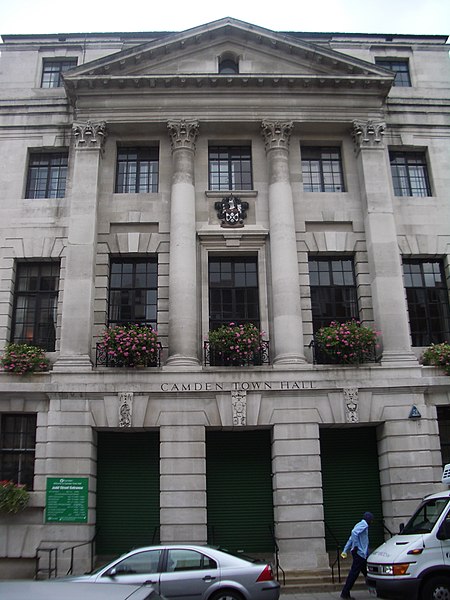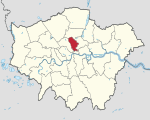Metropolitan Borough of St Pancras
1900 establishments in the United Kingdom1965 disestablishments in the United Kingdom20th century in LondonDistricts abolished by the London Government Act 1963History of the London Borough of Camden ... and 2 more
Metropolitan boroughs of the County of LondonSt Pancras, London

St Pancras was a civil parish and metropolitan borough in London, England. It was an ancient parish in the county of Middlesex, governed by an administrative vestry. The parish was included in the area of responsibility of the Metropolitan Board of Works in 1855 and became part of the County of London in 1889. The parish of St Pancras became a metropolitan borough in 1900, following the London Government Act 1899, with the parish vestry replaced by a borough council. In 1965 the borough was abolished and its former area became part of the London Borough of Camden in Greater London.
Excerpt from the Wikipedia article Metropolitan Borough of St Pancras (License: CC BY-SA 3.0, Authors, Images).Metropolitan Borough of St Pancras
Unity Mews, London Somers Town (London Borough of Camden)
Geographical coordinates (GPS) Address Nearby Places Show on map
Geographical coordinates (GPS)
| Latitude | Longitude |
|---|---|
| N 51.533333333333 ° | E -0.13333333333333 ° |
Address
Regent High School
Unity Mews
NW1 1RX London, Somers Town (London Borough of Camden)
England, United Kingdom
Open on Google Maps








